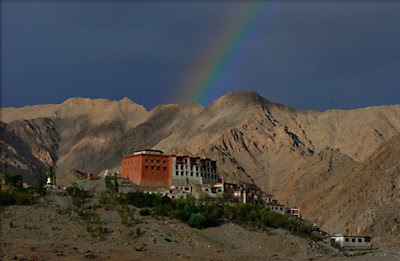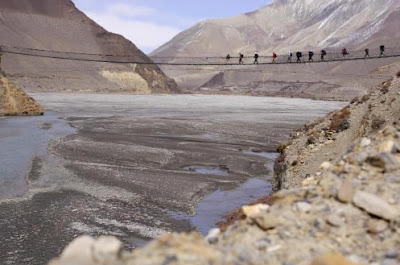
Chandogya Upanishad
There lived once Svetaketu. . . To him his father Uddalaka . . . said: "Svetaketu, go to school; for no one belonging to our race, dear son, who, not having studied, is, as it were, a Brahmin by birth only"
Having begun his apprenticeship when he was twelve years of age, Svetaketu returned to his father, when he was twenty-four, having then studied all the Vedas,conceited, considering himself well-read, and stern.
His father said to him: "Svetaketu, as you are so conceited, considering yourself so well-read and so stern, my dear, have you ever asked for that instruction by which we hear what cannot be heard, by which we perceive what cannot be perceived, by which we know what cannot be known? "
"What is that instruction, Sir?" he asked. . .
"Fetch me . . . a fruit of the Nyagrodha tree."
"Here is one, Sir."
"Break it."
"It is broken, Sir."
"What do you see there?"
"These seeds, almost infinitesimal."
"Break one of them."
"It is broken, Sir."
"What do you see there?"
"Not anything, Sir."
The father said: "My son, that subtle essence which you do not perceive there, of that very essence this great Nyagrodha tree exists.
"Believe it, my son. That which is the subtle essence, in it all that exists has its self. It is the True. It is the Self, and you, . . . Svetaketu, are it. "
"Please, Sir, inform me still more," said the son.
"Be it so, my child," the father replied.
"Place this salt in water, and then wait on me in the morning."
The son did as he was commanded.
The father said to him: "Bring me the salt, which you placed in the water last night."
The son having looked for it, found it not, for, of course, it was melted.
The father said: "Taste it from the surface of the water. How is it?"
The son replied: "It is salt."
"Taste it from the middle. How is it?"
The son replied: "It is salt."
"Taste it from the bottom. How is it?"
The son replied: "It is salt."
The father said: "Throw it away and then wait. . .on me.
He did so, but the salt exists forever.
Then the father said: "Here also, in this body, . . . you do not perceive the True, my son; but there indeed it is.
"That which is the subtle essence, in it all that exists has its self. It is the True. It is the Self, and you, Svetaketu, are it."The Upanishads are the principle texts of what is often regarded as the Hindu religion. Compiled between 800 and 500 BC, they are the result of meditations on many of the themes found in the Vedas, but brought to a new philosophical and spiritual level through the introduction of the concept of Brahman or universal spirit (India, the Vedic Era).















